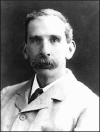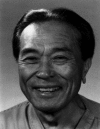History of neuropsychology through epilepsy eyes
- PMID: 20395259
- PMCID: PMC2872650
- DOI: 10.1093/arclin/acq024
History of neuropsychology through epilepsy eyes
Abstract
In the 19th century, Hughlings Jackson relied on clinical history, seizure semiology, and the neurologic examination as methods for seizure localization to inform the first epilepsy surgeries. In the 20th century, psychological and neuropsychological tests were first employed as both diagnostic and prognostic measures. The contemporary practice of epilepsy evaluation and management includes neuropsychology as a critical component of epilepsy care and research, and epilepsy and neuropsychology have enjoyed a very special and synergistic relationship. This paper reviews how epilepsy has shaped the practice of neuropsychology as a clinical service by asking critical questions that only neuropsychologists were in a position to answer, and how clinical care of epilepsy patients has been significantly improved based on neuropsychology's unique contributions.
Figures







References
-
- Almeida A. N., Martinez V., Feindel W. The first case of invasive EEG monitoring for the surgical treatment of epilepsy: Historical significance and context. Epilepsia. 2005;46(7):1082–1085. doi:10.1111/j.1528-1167.2005.66404.x. - DOI - PubMed
-
- Barr W. B., Chelune G. J., Hermann B. P., Loring D. W., Perrine K., Strauss E., et al. The use of figural reproduction tests as measures of nonverbal memory in epilepsy surgery candidates. Journal of the International Neuropsychological Society. 1997;3(5):435–443. - PubMed
-
- Berger H. Über das Elektroenkephalogramm des Menschen. Archiv für Psychiatrie und Nervenkrankheiten. 1929;87:527–570. doi:10.1007/BF01797193. - DOI
-
- Blum D., Meador K., Biton V., Fakhoury T., Shneker B., Chung S., et al. Cognitive effects of lamotrigine compared with topiramate in patients with epilepsy. Neurology. 2006;67(3):400–406. doi:10.1212/01.wnl.0000232737.72555.06. - DOI - PubMed
-
- Chelune G. J. Hippocampal adequacy versus functional reserve: Predicting memory functions following temporal lobectomy. Archives of Clinical Neuropsychology. 1995;10:413–432. - PubMed
Publication types
MeSH terms
Personal name as subject
- Actions
- Actions
- Actions

